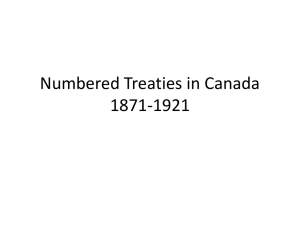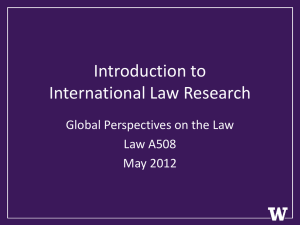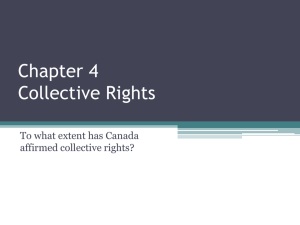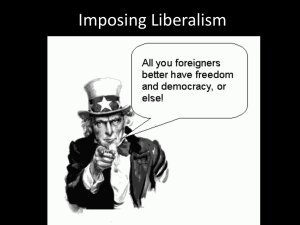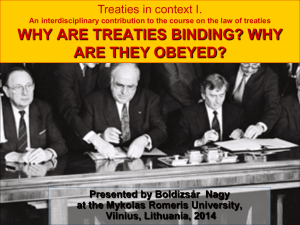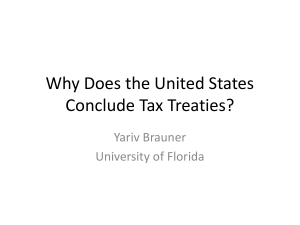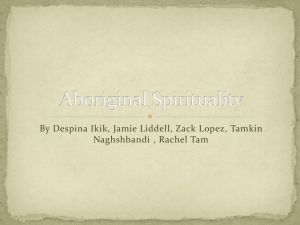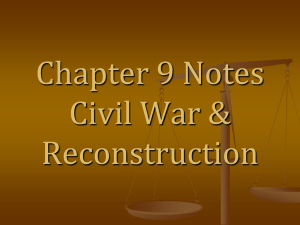What laws recognize the collective rights of First Nations peoples?
advertisement
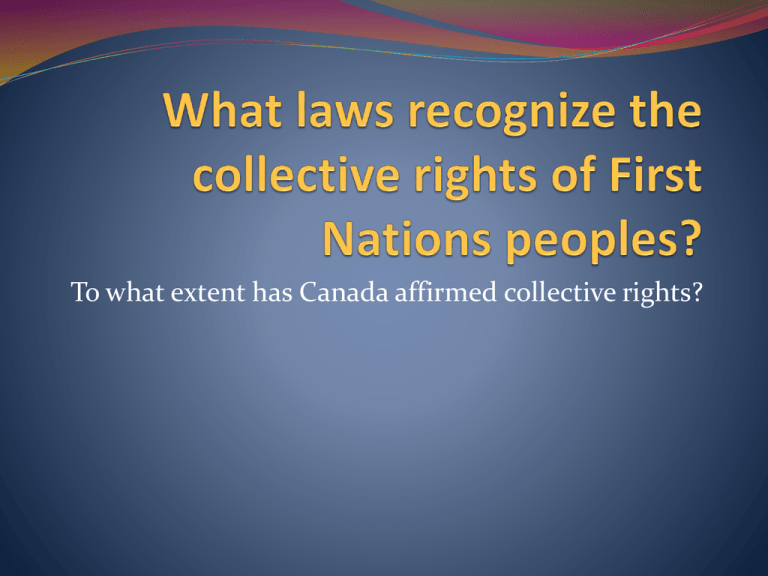
To what extent has Canada affirmed collective rights? Historically, when collectives such as First Nations and Europeans met and came together, each brought their own points of view, perspectives, and values. This has, at times, caused both conflict and greater understandings as the different collectives expressed themselves. As the Crown, or Canada, negotiated treaties with the different First Nations, both groups would come to define their relationship with each other and their respective collective rights. This continues today as modern-day treaties are being negotiated in parts of Canada where these relationships were not formally agreed upon. Let’s look at two diagrams… The two illustrations show the relationship between humans and the environment. Both illustrations have similar images within them. However, where humans are placed in the chart is very different and represents two very different beliefs on humanity’s place on Earth. Aboriginal groups traditionally believe that humans are but one part of the whole. This is best represented by the web diagram. The early French and English explorers and settlers to North America would likely have seen the world as having humans on top. Humans are more intelligent and stronger than everything, as identified in the pyramid. As colonizers of a new world, Europeans also held a similar view of themselves compared to First Nations and Inuit. Today, Aboriginal peoples include the First Nations, Métis, and Inuit. The collective rights for specific Aboriginal peoples were first documented in early treaties with the English and French. After 1867, Canada negotiated treaties with Aboriginal peoples. The British North America Act of 1867 assigned to Parliament legislative jurisdiction over “Indians and Lands reserved for the Indians.” These historical laws and negotiated treaties impacted the collective identity of the Aboriginal peoples. Be aware… First Nations: the umbrella name for the diverse Aboriginal peoples who have collective rights that are recognized and protected in Canada’s constitution. The constitution refers to First Nations as Indians, in keeping with the name used at the time when the treaties were originally negotiated. Indian: the word that Europeans used to describe the First Nations of North America. In fact, these peoples were diverse and had names for themselves. Many First Nations prefer not to use the word Indian to describe themselves. Let’s look at historical treaties. Let’s look at the Numbered Treaties on pages 124-127. Answer the following questions: Which treaties were established before Confederation, and which treaties were established after Confederation? In what areas of Canada were different treaties established? Identify what was agreed upon under the Treaties. Identify the reasons for the Numbered Treaties. Explain the connection between perspectives and interpretation of the treaties. These Numbered Treaties, also called the Land Cession or Post-Confederation Treaties, were signed between 1871 and 1921. The treaties granted the federal government large tracts of land throughout the Prairies, Canadian North, and northwestern Ontario for white settlement and industrial use. In exchange for the land, Canada promised to give the Aboriginal peoples various items including cash, blankets, tools, and farming supplies. Treaty videos Let’s look at The Office of the Treaty Commission to view four videos. We are All Part of Treaty, examines what Numbered Treaties are and how early negotiations were made between First Nations and the Queen. Treaties and Law: Introduction examines the importance of Treaties in Canada’s constitution. Treaties and Law: Treaty Relationship helps to understand treaty negotiations—the formal legal relationship between First Nations and early European newcomers. Treaties and Law: Making Treaties is an introduction to treaty relations between First Nations and Britain and the outcome that the two sides hoped to achieve. A Timeline of Two Views Turn to page 128. Using the chart, A Timeline of Two Views, write jot notes summarizing and comparing the two views on the Numbered Treaties along the timeline. Complete your chart using pages 129-135. Historical government decisions had an impact on the collective identity of the Aboriginal peoples. Aboriginal peoples are recognized in Canada for the value and diversity of their distinct identities, cultures, and social organizations. Lessons have been learned and, today, the collective rights of the Aboriginals are guaranteed by the Canadian constitution, yet there are still continued struggles. Let’s look at an article. Let’s think… Everyone is entitled to these rights… Imagine you lived in a world where it was believed that one culture was better than, or superior to, any other. This is the definition of ethnocentrism. ethnocentrism: the belief, point of view, or perspective that one’s culture is superior to all other cultures. Based on this ethnocentric philosophy, everyone who lives in this world who is not a member of this supposedly superior group would be expected to lose their cultural identity and become part of one ethnocentric culture. To do so would fit the definition of assimilate. assimilate: to become part of a different cultural group and lose one’s own cultural identity What rights would you lose if you were to live in this ethnocentric culture? Look at the diagram again, and identify the rights that you would lose. The Indian Act The collective rights of Aboriginal peoples are outlined in the Numbered Treaties and in the Indian Act. These collective rights include self-government; hunting, fishing, and gathering regulations; collective land rights; and the right to preservation of traditional languages, cultures, and traditions. Going Further Aboriginal peoples have lived here for more than 10 000 years, long before Europeans and other immigrants arrived. Let’s look at Continuing Negotiations: First Nations and the State to look at another perspective of the history of the First Nations and their relationship with the Europeans. The Indian Act In 1876, the Indian Act was passed by the Canadian government. It has been changed many times since it was initially introduced to the House of Commons. It is an act that has affected both the collective identity and the collective rights of the First Nations. Even though this act was meant to serve as a temporary law, it still affects the lives of Aboriginal peoples today. Let’s look at the Treaties and the Law: The Indian Act to find out about this law. The Indian Act Turn to page 137 and summarize what the textbook states about The Indian Act. Based this page and the video you watched, answer question #1 at the bottom of the page. Changing the Indian Act What was The White Paper? Read page 138 and answer the question about the news article. Based on your knowledge, complete the SPOT and RESPOND question on the page.
